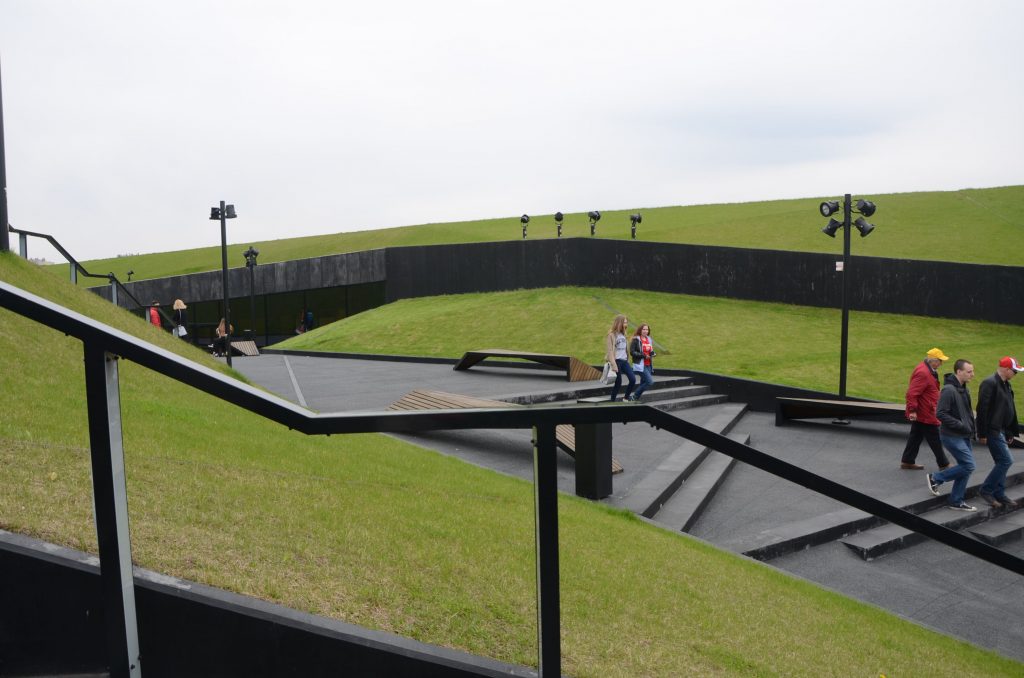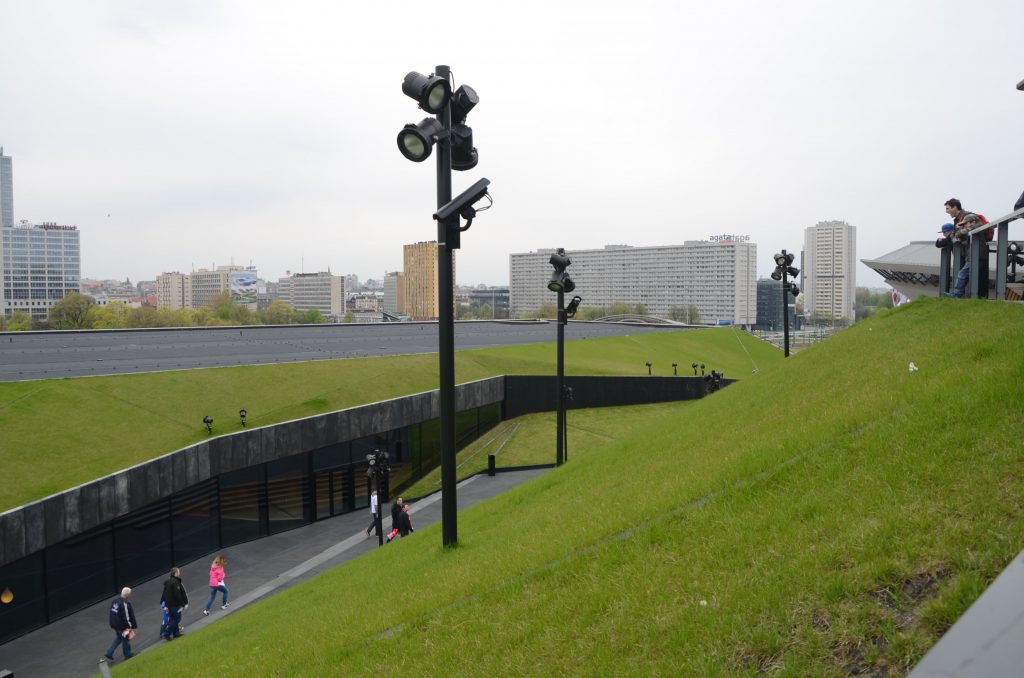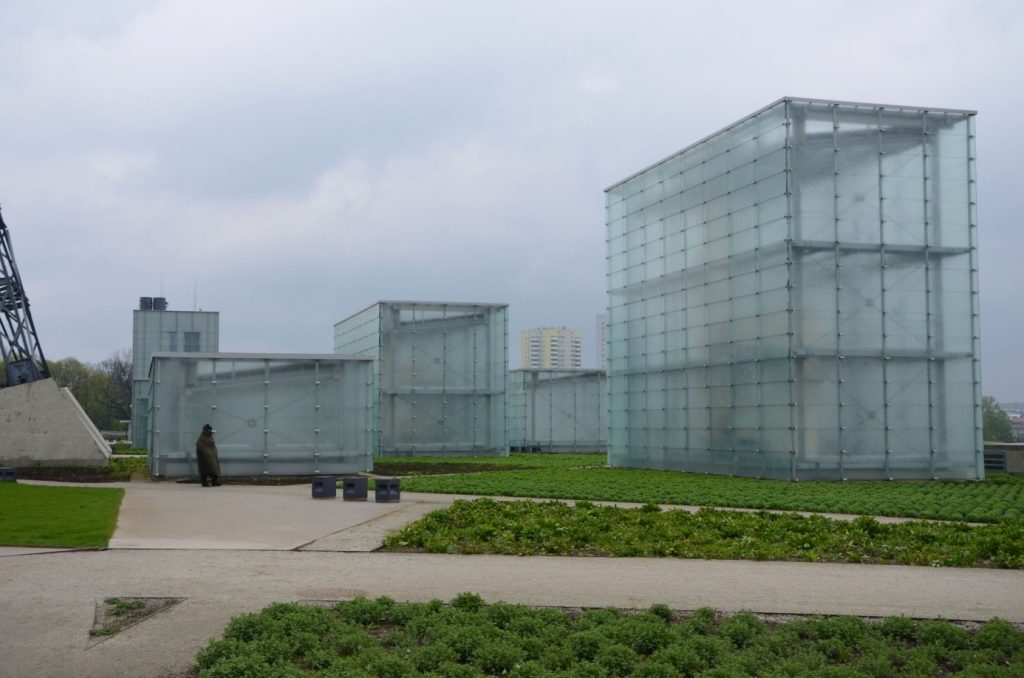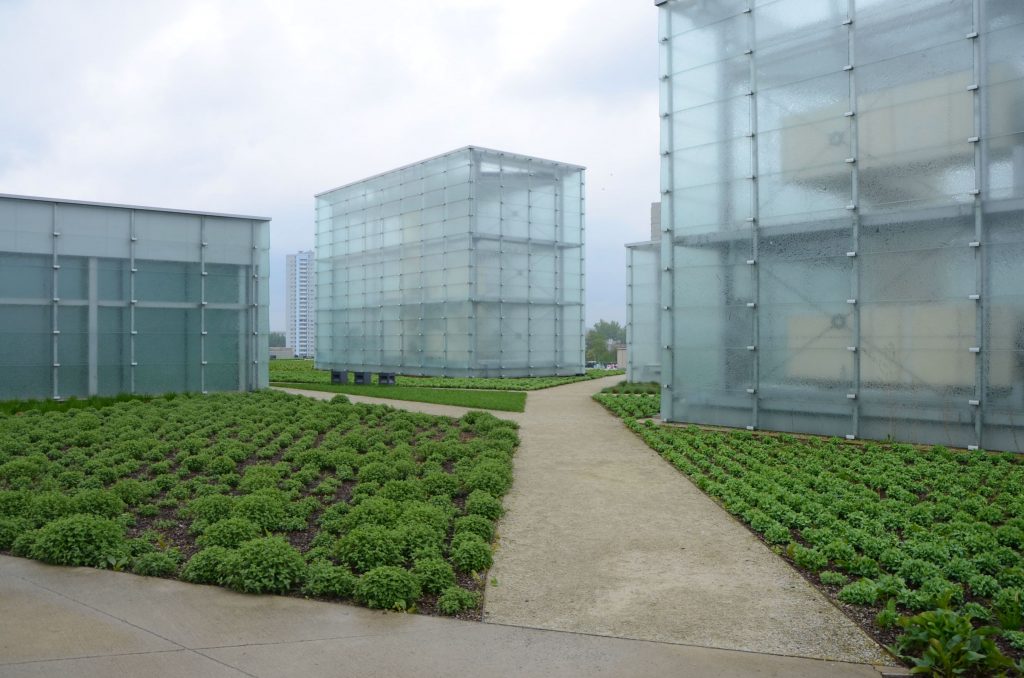Extensive green roofs.
They are characterized by a low thickness of the soil substrate ranging from 8 to 20 cm (data are also available proving that low sedum shrubs and mosses can grow on the substrate from 20 to 30 mm), thanks to which the roof is relatively light – its weight ranges from 50 up to 170 kg per 1 m2. This type of structure can be placed on inclined roofs (0 – 45% of the slope). It is greened by low vegetation, mainly perennials, grasses, sedum and mosses.
They are simple and inexpensive to maintain (it is important to monitor whether the roof is inhabited by tree seedlings, e.g. birch or poplar, whose seeds can be brought in with the wind or by birds feeding on the roof). No irrigation system is required for this type of structure.
They mainly perform ecological functions and are not used for recreational purposes.
Construction:
The construction is the same as for any green roof (the arrangement of layers is presented in the general description of “green roofs”). They are characterized by low thickness of the soil substrate needed.
An example of the composition of the growing layer: crushed or circular Keramite, compost. There should be 15% (max.) of organic matter <65 g/l, permeability 0.6-70 mm / min, water capacity > 35% [1]
Greening is achieved by:
- A) Sowing
– The meadows, grass or herbs are sown directly on the roof, even with low thickness.
(b) Planting of seedlings
– by traditional planting of sedum and houseleek seedlings, grasses and sedges, herbs and perennials (an example of a set of plants in the table below). With this method, it should be remembered that a longer period of time is needed for the roof to fully green, and such a roof should be monitored and cleaned of weeds until it is fully green.
An example of a set of plants used on an extensive green roof.
| Sedum acre | Festca glauca | Aster Alpine |
| Sedum hubridum | Festuca gaultieri | Campanula carpatica |
| Sedum kamtschaticum | Koeleria glauca | Thymus serpyllum |
| Sempervivum | Carex nigra | Sagina subulata |
| Salvia officinalis | Origanum vulgare | Phlox subulata |
Based on : https://zszp.pl/roslina/zielono-wkolo/zielone-dachy/
(c) Plant mats
– green and fully developed sedum mats (often we also meet mats with sedum mixed with field flowers, grasses or herbs, as well as those combined with moss) are unrolled directly on the prepared roof structure, they are already fully green, which reduces the likelihood of spreading trees on roof structures (e.g. poplar, birch, etc.).
For professionals:
The green roofs are fitted by specialist companies.
Examples of projects include:
A green roof on the Congress Center, Katowice
The green roof on the International Congress Center building in Katowice was designed by the well-known Polish architectural studio of JEMS. It is one of the most spectacular projects recently created in Poland. It is an important complement to the large-scale building.
The context of the site is important in this project, which affects the form of this architecture. The building was located in a very important place for the identity of the city of Katowice – between the iconic “Spodek” hall and the new Silesian Museum, which was established on the site of the former “Katowice” mine. The building is to disappear into space, its shape is created by finely designed grass roofs. They also create a diverse green landscape occupied in the past by the coal pile – hence this facility becomes a sort of allegory of healing space through the natural environment. The green roof, which can be walked on, thanks to the system of ramps, stairs and paths placed on it, encourages residents of the city and numerous tourists to stroll through it and look at the panorama of Katowice from different perspectives. The contrast to the green roof is the development of the space around the building, which directly relates to the post-industrial heritage of this place.
[1] https://zszp.pl/roslina/zielono-wkolo/zielone-dachy/



A green roof on the Silesian Museum building, Katowice.
The green roof at the Silesian Museum in Katowice has been color-matched to the colors of cubicles designed for the function of skylights, thanks to which the interior of the former “Katowice” mine is illuminated by natural light. This green roof, unnoticeable in space, is something like a gray-blue carpet made of various types of sedum resistant to both large solar operations and water deficit.


Sources and additional information:
Dover J., 2015, Green infrastructure. Incorporating plants and enhancing biodiversity in buildings and urban environments, Routledge, New York
Kania A., Mioduszewska M., Płonka P., Rabiński J., Skarżyński D., Walter E., Weber-Siwirska M., 2013, Zasady projektowania i wykonywania zielonych dachów i żyjących ścian, Agencja Reklamowo-Wydawnicza „Ostoja”, Kraków
www.zszp.pl https://zszp.pl/roslina/zielono-wkolo/zielone-dachy/
